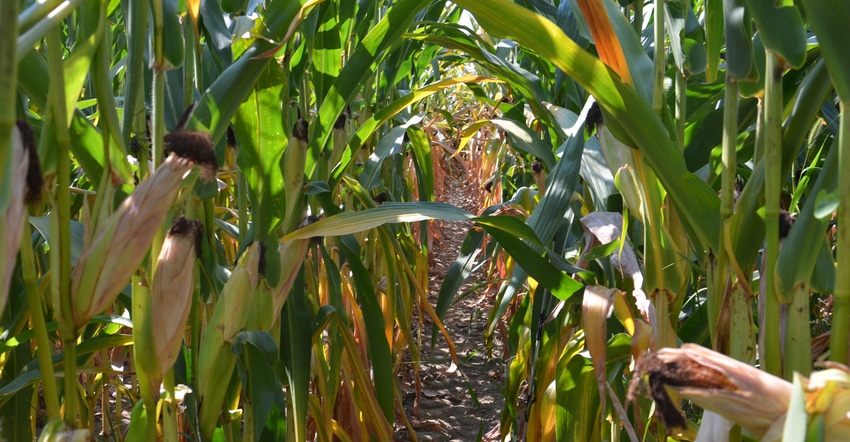July 3, 2019

My agronomist advises checking for nutrient deficiencies. Which ones should I look for, and what are their symptoms? Can I do tissue tests this late? If I see a widespread deficiency, should I pull soil samples now or wait until the field is ready for routine soil sampling?
The Indiana certified crop adviser panel answering this question includes Jamie Bultemeier, A&L Great Lakes Labs, Fort Wayne; Troy Jenkins, agronomist with Ceres Solutions, Rochester; and Marty Park, Great Lakes Seed Service, Rensselaer.
Bultemeier: Often the greatest chance of nutrient deficiency is during the mid- to latter portions of rapid growth or during grain fill. This is the point in the plant’s life when it’s taking up and using nutrients at the greatest rate. Any shortfalls in nutrient availability will be exaggerated. These challenges are also often accompanied by weather challenges such as hot and dry conditions that can reduce the plant’s ability to access limited nutrients.
For corn, the most commonly deficient nutrients are:
Nitrogen, which results in necrosis and then chlorosis of the leaf along the midrib, starting at the bottom of the plant and working upward.
Potassium, which leads to chlorosis and necrosis of the leaf margin starting at the bottom of the plant and working upward.
Sulfur, which mimics a nitrogen deficiency and often occurs in conjunction with nitrogen deficiency.
Zinc, which appears as white striping on the leaf extending from the collar; severe cases can lead to shortened internodes.
Iron, which appears as interveinal yellowing.
Boron, which does not often produce distinct visual symptoms, but can lead to reduced kernel pollination.
Jenkins: Checking for macronutrient deficiency on N, P and K in late season using a soil test is unpractical due to testing limitations. Fixing macro deficiencies is almost impossible due to crop need and ability to fertilize adequately and properly. If we see macronutrient deficiencies very late, the yield loss potential most likely has already occurred.
Using tissue testing later in the season to determine nutrient balance, secondary and micronutrient deficiency is a much better way to check plants for hidden hunger. This testing should occur before pollination and grain fill so foliar applications of micronutrients can be applied properly.
Many times, tissue testing reveals deficiencies when plants appear normal. Because most plants need only small amounts of micronutrients, addressing deficiencies through foliar applications is effective. Tissue testing when seeing a widespread deficiency can help clarify what the deficiency is but might not really tell why it’s happening. A soil test taken from the tissue test area should accompany the tissue test. If widespread macronutrient deficiencies are seen during the season, plan on having a detailed postharvest soil test performed and analyzed by a certified soil lab.
Park: In corn, I would be looking for nitrogen and potash deficiencies. Nitrogen shows up as firing on the leaves, starting at the bottom of the plant and moving up the plant. Individual leaves have the inverted “V” that goes from the edge of the leaf to the midrib as you get closer to the stalk.
Potash deficiency has been showing up more in recent years along the edges of the fields. Look for yellowing which turns to brown along the leaf margins, starting at the tip on the lower portion of the plant.
You May Also Like




